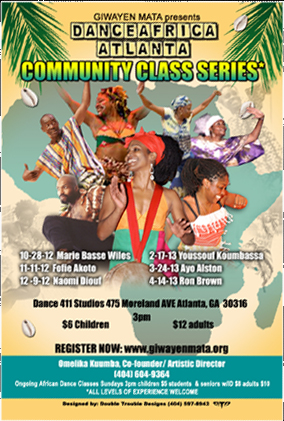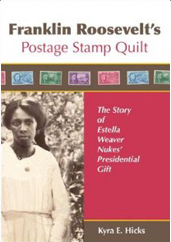

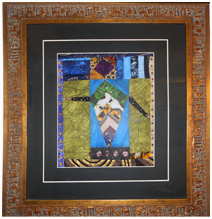
Best Of Show 2011
"Short Term"
by Aisha Lumumba
Holidays Aglow 2012 is an exciting exhibition of visual art and performance art with passionate expressions. This year's event offers the 10x10 Small Works Wall along with other exquisite works of art. The reception includes a cultural fine art exhibition, refreshments and performance showcase that explores a multiplicity of experiences and interpretations by visionary artists. The artists work is for sale. It is a great time to support Atlanta's noted artists as well as the emerging artists.
The Opening Reception and Awards Ceremony for this year's 14th Annual Holidays Aglow on December 2, will be a grand affair.
It all started on March 18, 1998 at 6:35 p.m., when gathered friends of the Arts were called to order with Bishop John Lewis presiding. He and actress, director and teacher, Mrs. Georgia Allen, (also present) had sent out a call for a meeting of concerned community members.
Those answering the call and in attendance were Mr. James Patterson of Clark/Atlanta University Music Dept; Dr. Jimmy Brown, Psychologist; Rev. Jackie Stokes; Mr. Ed Spriggs, Director of the Hammonds House and by proxy, Ms. Andrea Frye, Director.
Ed Spriggs addressed the state of support for the Arts in Southwest Atlanta and specified the needs of the organizations. Needs ranged from facility requirements, to community awareness, to individual artists concerns of challenges to existing organizations longevity. This information spurred discussion, which finally brought up the question, "What are we going to do and how are we going to do it?"
AAFTA was organized to address this question by:
•Bringing awareness to the inequitable treatment and attention given the Arts, Arts organizations and Artists in metro Atlanta.
•Developing and presenting events, forums and activities that support the organization's mission.
Shortly thereafter, the organization decided to create a showcase for the artists to facilitate the goal of bringing awareness and attention to the Arts in Atlanta. The thriving AAFTA organization today proudly presents the 2012 Holidays Aglow Artists Exhibit.
For more information about African Americans For The Arts www.a-afta.org
Opening Reception & Awards
Sunday, December 2, 2012 from 2pm-6pm
at
Stuart McClean Gallery 684 John Wesley Dobbs Ave. NE Suite A-1 Atlanta, GA 30312
Information: (404) 913-2781
or (404) 913-ART1

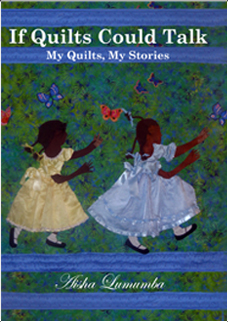
Quilts and Quilt Stories Book
by Aisha Lumumba
8 quilt photographs in full color
Available in paperback
7" x 10" 28 pp
Only $15.99
Order Now from
www.obaquilts.com or http://amzn.to/PQUP39

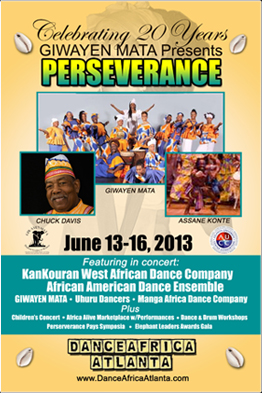
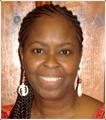
African American quilting is said to be as old as the history of America. African American enslaved women were used for spinning, weaving, sewing and quilting on plantations and in other wealthy households.
Although it is widely believed that the quilt patterns used were those of upper class whites, the truth is that many African cultures were familiar with the geometric patterns used in the European quilting traditions. African Americans enslaved as household workers became highly skilled in creating these quilts.
The enslaved people had very little time left to sew for themselves, however, we do know they made scrap quilts or other bed coverings for their families. Unfortunately, those quilts have not survived to be studied today, which makes the absence of the physical quilts a problem. This absence led many historians to mistakenly conclude that enslaved African Americans did not make quilts.
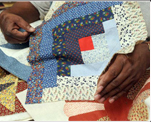
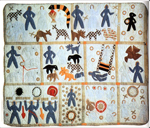
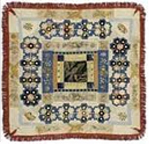
Many recorded accounts from enslaved people appeared before the Civil War, but "more than one-third are the result of the ambitious efforts of the Federal Writers' Project of the Works Progress Administration (WPA) to interview surviving ex-slaves during the 1930s. The result of these efforts was the Slave Narrative Collection, a group of autobiographical accounts of former slaves that today stands as one of the most enduring and noteworthy achievements of the WPA. Compiled in seventeen states during the years 1936-38, the collection consists of more than two thousand interviews with former slaves, most of them first-person accounts of slave life and the respondents' own reactions to bondage" says Norman R. Yetman in his introduction to the WPA Slave Narratives.
The WPA slave narratives also give us a glimpse into the value of quilts to the enslaved people and their families. One woman proudly told how her mother, "used to quilt the prettiest quilts you ever see...." Many lacked sufficient clothing and blankets with nothing left to make a quilt but others did make quilts even though they had little means.
The works of Eli Leon and Cuesta Benberry help us find quotes easily without having to read through all two thousand interviews. A few are listed below:
In de ginnin' time [marster] 'lowed de wimmen to pick up de cotton what drop on de groun' and make into beds, an' quilts an' comforts." –Harrison Beckett, Texas
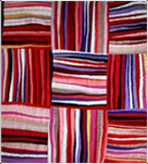
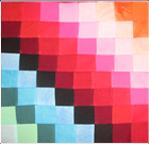
"Grandma…used to piece up a heap of quilts out of our old clothes and any kind of scraps she could get a hold of." –Martha Colquitt, Georgia
"I worked late and made pretty quilts… I worked nights to piece my quilts. Evva Christmas they'd give us a new calico dress and we'd piece up the old ones." --Elvira Boles, Texas
"We had big times at the quiltings and big eatin' afterwards. They would make two quilts a night and they were nice quilts too with hems and everything. The Nine Patch pattern was a beauty, with little squares no bigger than our thumb nail." --Lizzie Fant Brown, Mississippi
"They… had…big quilting bees, the men holding the lights and the women quilting, until all the quilts were finished. A big supper and dance for all the workers followed." --Dellie Lewis, Alabama
Contrary to the believes of many skeptics, enslaved African American people made quilts from whatever few resources they had available to them. They gathered together in secret and held quilting bees which were very much illegal at the time. And most of all they treasured the few things they could hold on to and quilts were among those possessions.
Marquetta Bell-Johnson

Art Educator
Textile Artist
Author
Ms. Bell-Johnson is an enthusiastic artist who has been creating hand dyed textiles for over 30 years and making quilts for over 5 years. She is an extraordinary teacher.
She is now available for workshops, as well as individual and group classes.
www.atikaart.com

Her latest book HAND-DYED QUILTS is also available from www.amazon.com
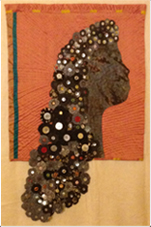
Whenever I am asked 'when did you start to do art or become interested in art professionally', the answer is always the same, "I really don't know when". Growing up in a creative environment was the norm and I never really thought about it as being art, or for that matter, being creative until many years later as my knowledge of such matters matured.
As a child I used to do rubbings of leaves on fabric left over from my mother's scrap pile, and make wonderful sculptures using twigs and small branches held together with copper wire with all sorts of stuff hanging from them. I poked holes in tin and made luminaries that we sat on the porch to burn candles at night. I spent many of my afternoons and weekends making doll clothes and fancy ties for the family cat. My mother and father encouraged me to sew and make fun things and by the time I was 8 or 9, I was able to make simple items. I also studied sewing and pattern making in high school. There was never a time when the most basic items for creativity were not around. The great outdoors was also something that sparked creative ideas in me. Seeing the change of seasons year after year, or subconsciously noting the changes in the same tree or area for long periods of time was very powerful. I still remember the words to a poem that I wrote as a child about lichens and how it grows on trees. I later made a quilt that had a theme of a similar nature and sold it. It was among the first that I sold.
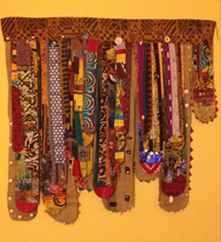
Yoruba Masqarade
My inspiration comes from a number of places, political events, nature, as well as everyday happenings. My series "Middle Passage" was inspired by history and the "African Rainforest" was done to call attention to the dwindling rainforests throughout the world that serves as lungs for the planet. My ongoing body of works includes traditional patterns as well as multimedia themes using paper, metal and found items for assemblage. I also draw from places that I have traveled or things I have read. "Yoruba Masqarade" was inspired by an actual parade that I'd seen in the West African country, The Gambia, many years ago, and "One followed by An Eternity of Zeros" was a result of reading the Persian writer Dr. Ali Shariati. As a general rule, my themes are abstracted and geometric, but I was moved to do a quilt that featured images during Mr. Obama's run for the white house as I am a firm believer that it is the role of the artist to document the good as well as the not so good of the culture.
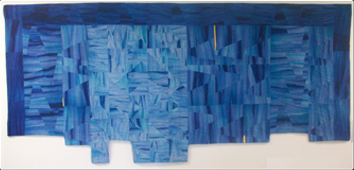
Alaska Highway
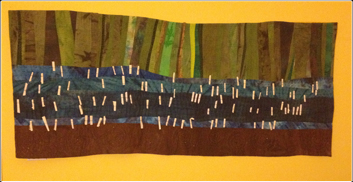
Prayers Cast on Water
As a professional artist I have had several shows with other artists and two one woman shows. Presently I have several pieces on exhibit at the African American History Museum in Newtonville, NJ. (www.AAHMSNJ.org). Several of the shows that I have participated in can be seen online by googling Karimah Abdusamad. I am active in a couple of associations. Surface Design being one of them, and the other a local group of artists that meets quarterly here in Durham, NC. As a self taught artist it is really important to attend workshops and take advantage of all that is available to enhance techniques. My ideas are my own, and I listen intently to the cultural narrative to stay abreast of issues that are current. My in house studio allows me time to work several hours during the day and often time well into the night. I have times of intense work and then there are times that I am rather dormant. During these times I actively keep a sketch book and do art journaling.
Working with children is also part of my artistic expression. I recently curated an exhibit that featured art done by school age children at a local bank with the theme YART…Yard Art. All of the pieces were made with materials found in the yard. During the summer I teach several students in my Saturday Morning Studio.
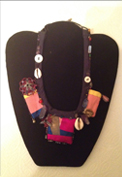
Quilted Necklace
Looking forward it is my desire to participate in as many exhibits as possible, especially at universities far and near. Having lived in West Africa for many years I'd love to do an exhibit there with artist friends that still reside there, and experience mediums that I have not tried before such as dying fabric and batik.
I live an artful lifestyle and it is reflected daily no matter how small. It can be as simple as arranging or rearranging things in my surroundings to putting ideas on paper that will result in a series that can take months to complete.
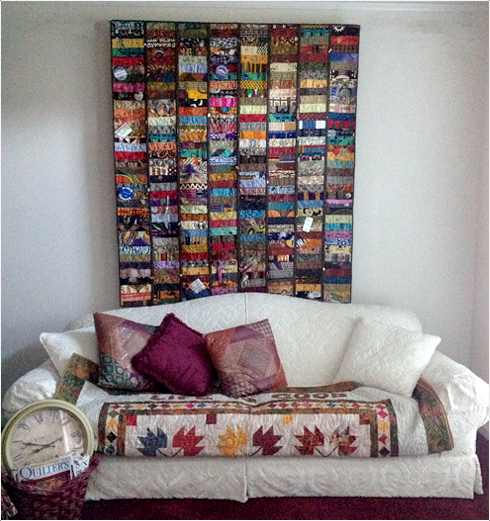
This quilt is over the couch in Ms. O.V. Brantley's library. I love the warm feeling of the quilt on the wall and the leaf quilt on the couch, just right for reading a good book.
The quilt is called, "From Africa To Atlanta by way of Arkansas." It features scrap piecing with inspirational words appliqued on it.
Send some pictures of your quilts in great places and a brief write-up about it. You may see it published here. Send to alumumba@obaquilts.com

